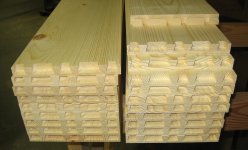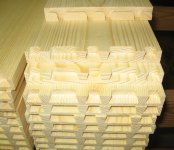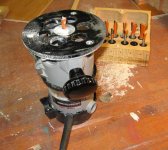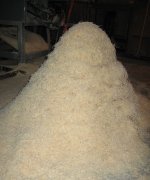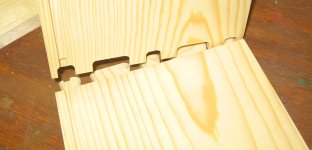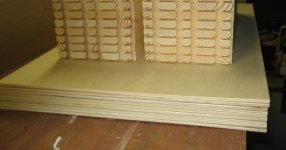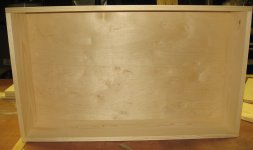OK,
Pins are done, so here are some more photos.
1. Pins all stacked up.
2. Close up of the pins
3. Pins in the jig with a backerboard to reduce tearout.
4. Router set up for anyone interested. The Leigh set of bits from CMT is behind the router. I got a good deal on the set several years ago at a wood show.
The leigh jig isn't for everyone. It's complicated to set up and takes some time. The real difference is that it will do dovetails which aren't regular, that is, obviously machine made. The other jigs need the drawers to be multiples of 1/2 inch high and the pins and tails are always 1/2 inch. The Leigh jig isn't cheap either. I bought mine in the 80's, and I'm getting my use out of it, but for most use, a good standard jig will do great.
The router I've used here is a standard Porter Cable. Don't skimp on the router or the bits. The router should be able to do the work without slowing down, and good bits help that too. I like small powerful routers, like this PC. I have a big Bosch plunge router, but I usually use this PC. It's just right for almost everything. The most important thing in the router is the collet. Less expansive routers will look good on paper, but the little things will eat you up, like a collet that comes lose, a depth setting that's finicky, a base that's not square to the shaft etc. It's just like a quality tractor. You pay extra for the stuff you wouldn't notice until you work with one that's really designed and made well.
I will post more as things come together. These built-ins aren't going to be beautiful. They are made to match (look and feel) the pine molding already in the house. If I'd made them out of tiger maple and curly cherry with Walnut pulls, they would look great by themselves, but would look stupid in the room they are going in.
Cliff
